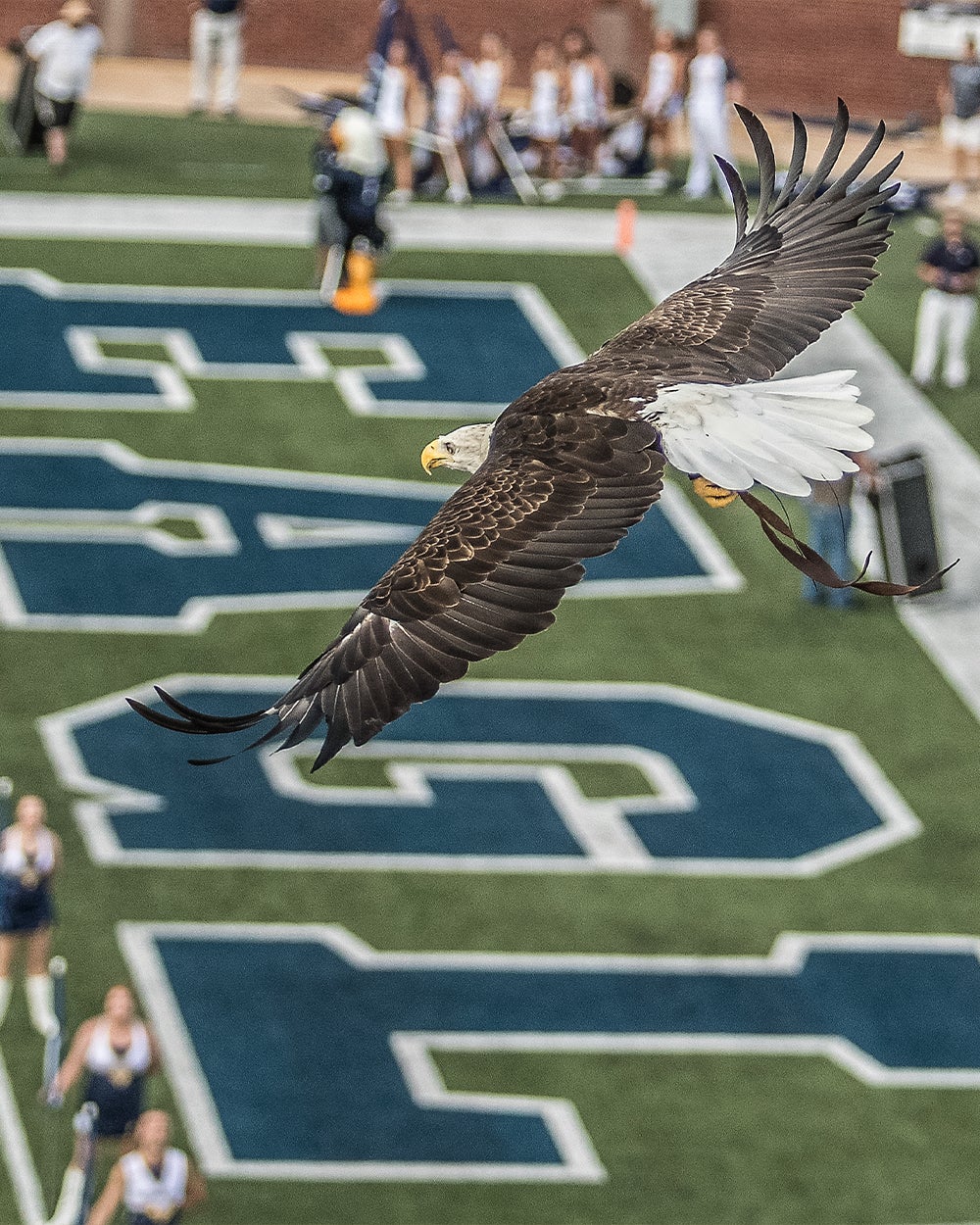Professor and students get to work with world’s largest radio telescope
How do you find something that is not only invisible to the human eye, but also located trillions of miles from earth?
Well, it helps to have the world’s largest radio telescope at your disposal.
A professor in the Department of Physics at Georgia Southern University and two her students recently returned from a visit to the world-renowned Arecibo Observatory in Puerto Rico.
Professor Sarah Higdon and physics majors Josh Davidson and Daniel Richey are members of the Arecibo Legacy Fast ALFA survey (ALFALFA). Using the observatory’s radio telescope which features a dish that measures 1,000 feet in diameter the survey is searching for dark galaxies.
‘These objects consist mainly of dark matter and hydrogen gas, with very few stars,” Higdon explained. ‘The lack of starlight means the galaxies are invisible and will remain undetected unless we can detect their hydrogen gas using radio observations.
‘The survey is also looking for larger gaseous features known as tidal tails. These are formed when galaxies collide and can be 500,000 light years in length, which is five times longer than the diameter of our own galaxy, the Milky Way.
‘The detection of both dark galaxies and tidal tails will help astronomers understand how galaxies form and evolve in the universe.”
The Arecibo Observatory is part of the National Astronomy and Ionosphere Center, a research facility operated by Cornell University under a cooperative agreement with the National Science Foundation. Additional support is provided by NASA.
Operating 24 hours a day, 365 days a year, the Arecibo Observatory is considered one of the most important centers for research in radio astronomy, planetary radar and terrestrial astronomy.
According to Higdon, radio telescopes are crucial instruments in the study of the heavens because they can detect things that are invisible to optical telescopes.
Light, she noted, consists of electromagnetic waves, and different colors of light are electromagnetic waves of different lengths. But visible light covers only a small part of the range of wavelengths in which electromagnetic waves can be produced.
Radio waves are electromagnetic waves of significantly greater wavelength than those of light. In 1932, scientists learned that astronomical objects such as planets, stars and gases emit radio waves, and astronomers have since figured out how to make pictures from these waves.
A radio telescope is comprised of numerous intricate parts, but the most striking feature of the one at the Arecibo Observatory is its dish. Looking somewhat like a TV satellite receiver on steroids, the dish covers almost 20 acres and is 167 feet deep. The surface of the dish is made up of almost 40,000 aluminum panels, each one measuring about three feet by six feet.
A platform that contains antennas, radio receivers and other highly sensitive equipment is suspended 450 feet above the dish. The 900-ton platform is supported by 18 cables that are strung from three reinforced concrete towers that are positioned around the dish.
Thanks to the Arecibo Observatory’s mammoth radio telescope, the ALFALFA survey expects to locate and study 20,000 galaxies � some of which are a billion light years away from earth.
A single light year, by the way, is six trillion miles.
‘Radio observations are often used to see the ‘stuff’ between the stars, which is called the interstellar medium,” Higdon said. ‘The ALFALFA survey is detecting atomic hydrogen gas in the interstellar medium. A typical timescale for the emission of a photon from a single hydrogen atom is around 11 million years. That’s a long time to wait to see something!
‘However, there is such a vast amount of hydrogen in these atomic clouds that we can detect them in a matter of minutes using the Arecibo telescope.”
Use of the radio telescope is available on an equal, competitive basis to scientists throughout the world. Through their relationship with the ALFALFA survey, which is led by Cornell professors Riccardo Giovanelli and Martha Haynes, the Georgia Southern group was able to work at the Arecibo Observatory for five days in January.
During the first four nights, Higdon and her students labored from midnight until 6 a.m., pointing the telescope to specific coordinates and monitoring the flow of data that was collected by the system’s computers.
On the fifth night, the telescope was used for radar observations of Saturn, so Higdon, Davidson and Richey ascended the platform that hangs 45 stories above the dish. Once there, they helped to put a protective cover on the Arecibo L-band Feed Array (ALFA), a sophisticated seven-receiver system that allows large-scale surveys of the sky to be conducted with unprecedented sensitivity. The cover protects ALFA from the potentially destructive radar waves.
‘The ALFALFA survey will take about six years to complete, and this trip was the first step in our students becoming regular participants,” Higdon said. ‘Few undergraduate students ever get the chance to participate in an astronomical observing run at a world-class facility. This opportunity is usually only available to Ph.D. students.”
Davidson is a sophomore from Byron, Ga., and Richey is a junior from Claxton, Ga. In addition to visiting the Arecibo Observatory, these and other Georgia Southern students will be trained as remote observers who can control the radio telescope from offices within the University’s physics department. They will analyze the data as part of their research projects and present their findings at a conference in Puerto Rico this fall.
‘The direct involvement of undergraduate students in research projects within a legacy survey will enhance their education, and involvement in interesting, exciting research projects encourages students to consider careers in science,” Higdon said. ‘The Arecibo program will extend research opportunities to undergraduates who otherwise not participate. This is especially important as we see a declining number of domestic students continuing in science.
‘Faculty and peer mentoring, which is an important part of this program, is a proven method for facilitating the next generation of astronomers.”
Posted in Archive, Press Releases

